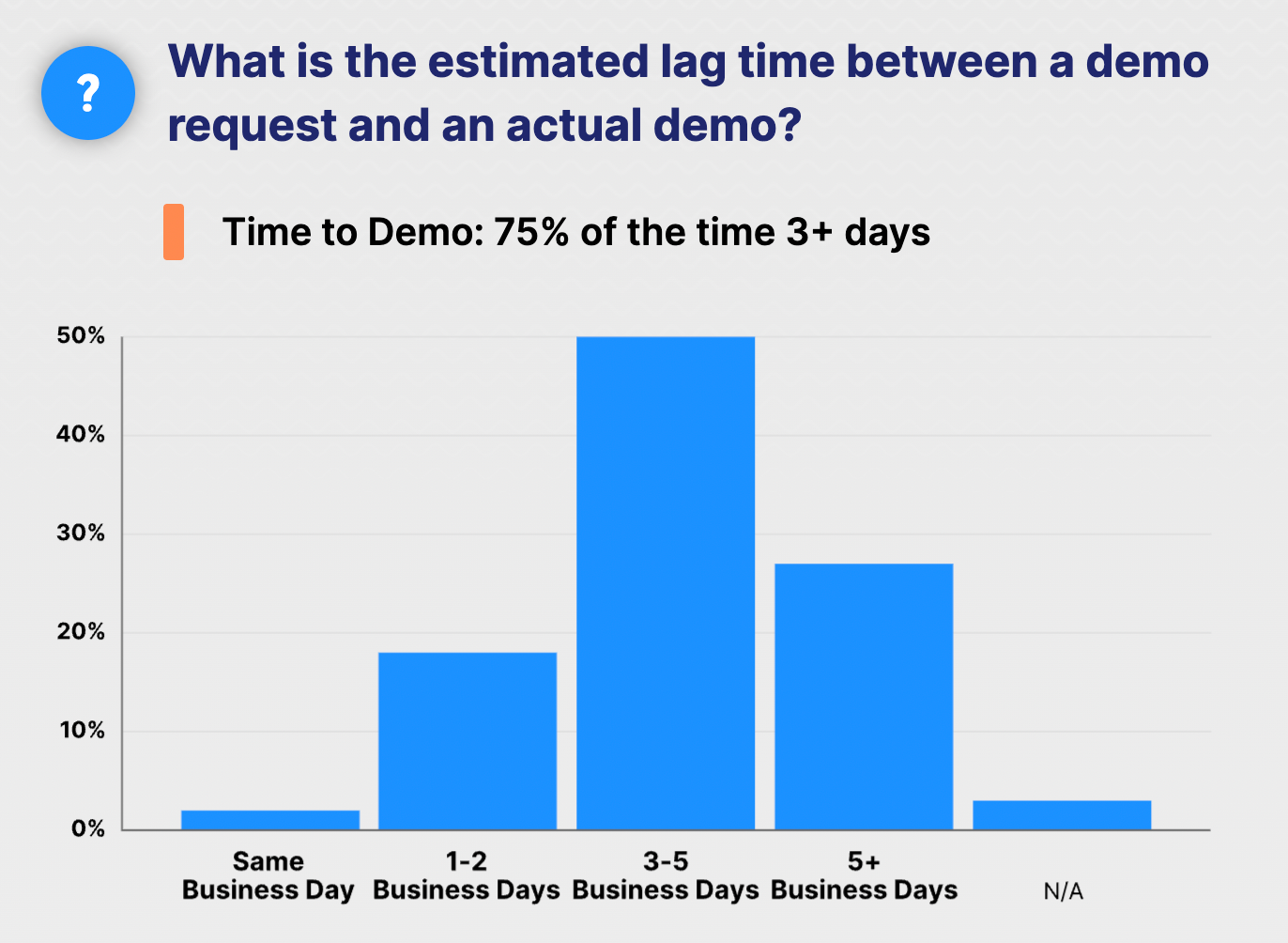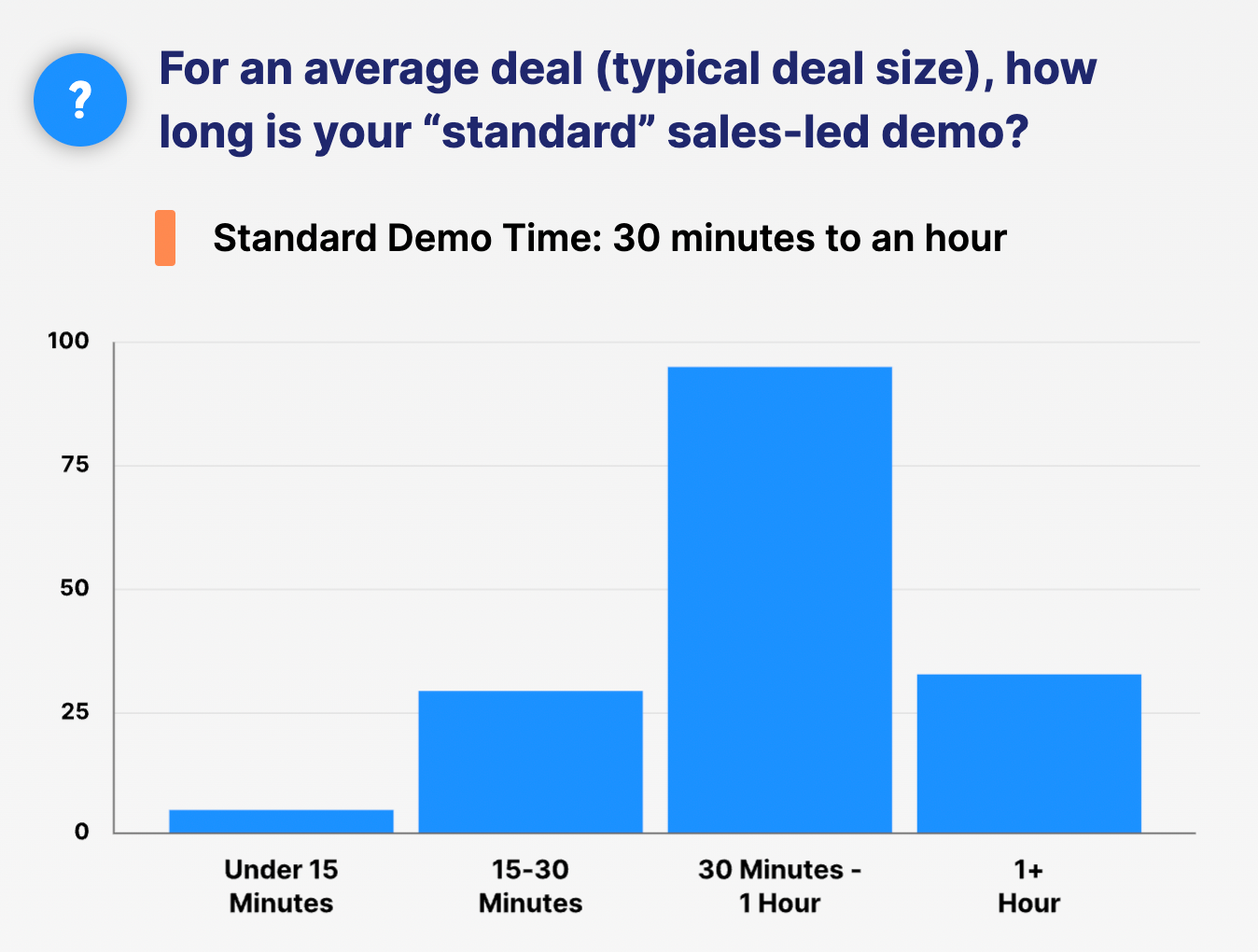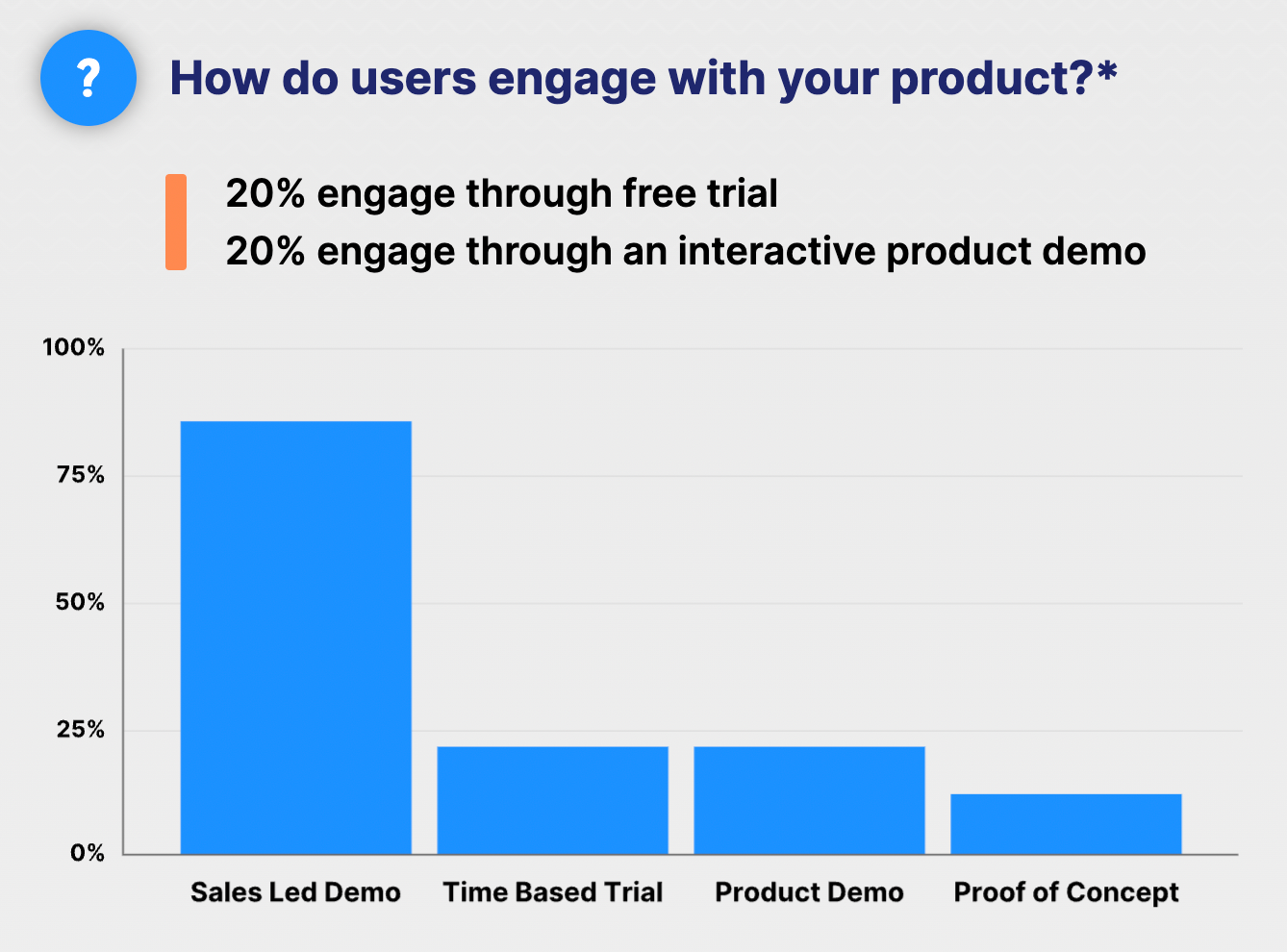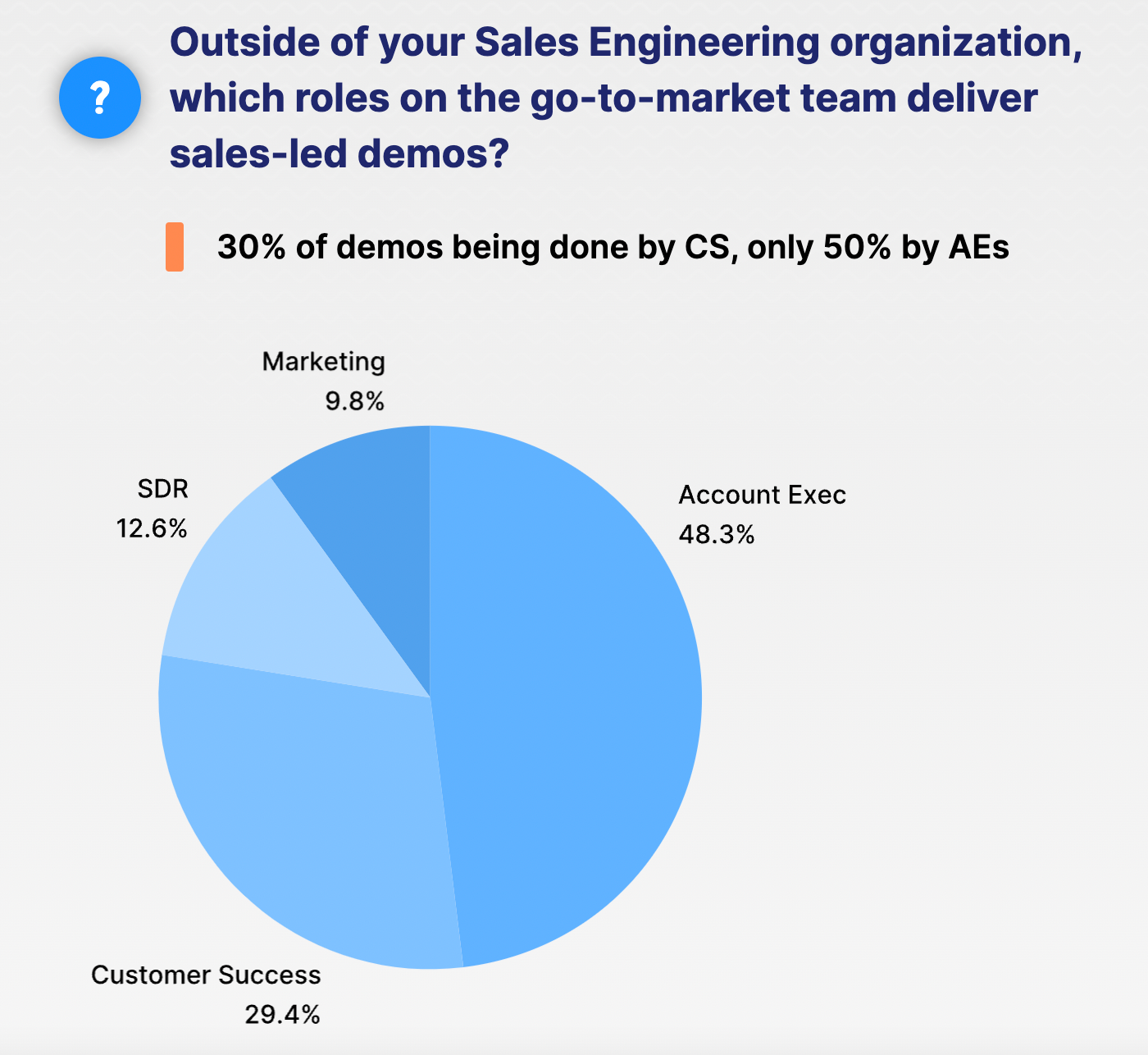Effective Software Demos in 2022 [Best Practices to Sell to Modern Buyers]

CEO, Co-Founder
In the competitive world of SaaS, it’s more important than ever to nail your software demo. But as buyer behavior is changing, what’s the best way to give a software demo in 2022?
In this article we look at the traditional sales-led software demo and why the current way they are run may no longer be the most effective option for your business. We then discuss best practices for selling to today’s software buyers.
What is a Software Demo?
Your software demo is your chance to show buyers the value of your product. It involves a demonstration of the software’s core features and unique value. Traditionally, the software demo has been part of a sales-led motion where:
- Buyers complete a “sign up for demo” form
- Buyers wait to hear back from a sales rep to schedule a demo
- Buyers attend demo and sales provide a walkthrough of the product’s features and give a product pitch
However, in recent years, the traditional software demo motion has become increasingly outdated and many SaaS companies are exploring alternative options.
Why is the traditional sales-led demo outdated?
There are two main reasons for the shift in software demo best practices.
1. Changing buyer demographics: 45% of B2B software buyers are 25-34 years old. This demographic is the largest, followed by 35-44 year olds, who make up 30% of buyers. This new generation of buyers have different expectations. These buyers expect to access information quickly and independently.
2. The rise of PLG: Many of the top B2B Saas brands (including Dropbox, Slack and Zoom) all use a product-led growth model. The rise of PLG has accustomed buyers to a more hands-on sales experience. This means all companies (PLG and not) need to re-evaluate their go-to market strategy in order to keep up with PLG competitors and their focus on the end user.
But most sales teams have not managed to make the shift:
The time to demo is too long
As our State of the Product Demo eBook shows, the typical time to demo is 3-5 days. The lag time between a demo request and an actual demo is even worse at larger companies (500+ employees), where 85% of companies averaged more than three days to respond to demo requests.

This goes against prospects’ expectations of moving fast and having the information they want at their fingertips.
The first call doesn’t always lead to a demo
Most prospects don’t even see a demo on their first call with sales. They find themselves on a discovery call, being educated about product options.
But PLG buyers are used to doing their own discovery and educating themselves about product features. A first call with no demo only lengthens the time to value.
Demo calls are time-consuming
The majority of standard demo calls last 30 minutes to an hour.

Prospects can end up waiting up to a week before they hear back from a company, go through a discovery call–and when they finally get to the demo call they need to sit through a lengthy presentation.
This time-consuming process compares negatively to competitors who have adopted a more modern, PLG-informed approach.
Best practices and modern software demo trends
While prospects wait for you to respond to their demo request, they are:
- Losing interest in your product
- Evaluating competitors’ offerings
- Allowing the status quo to remain the norm at their company
To avoid leaving potential deals on the table, it’s important to understand and implement modern sales trends. Here are some best practices to follow:
1. Speed up time to value
Instead of length discovery calls, experiment with a blended disco/demo first call.
Some sales teams may be wary of this approach, arguing that they’ll be inundated with unqualified leads who are ultimately not going to convert. But in the PLG world, your prospects have already done some of the discovery and qualification themselves by interacting with your product up front.
2. Incorporate ways for prospects to interact with your product
Our survey found that the majority of companies are still leading with a sales-led demo. But the rise of PLG sales motion is notable:
- 20% of users first engage with the product through a free trial
- 20% of users first engage with the product through a product tour

*Respondents could select multiple ways customers engage with their product
Perhaps even more strikingly, we found 25% of deals request hands-on access to the product during the deal cycle.
But what’s the best way to incorporate a hands-on option for your prospects?
Free trials are often associated with PLG sales motions. The free trial has become a familiar part of buyers' purchasing experiences. Free trials allow prospects to discover the product value for themselves with the real product at their fingertips.
The majority of free trials are 15-30 days. That means extending your sales cycle by 15-30 days, too.
However, there are faster alternatives to free trials or freemium offerings that still provide a hands-on experience for buyers.
Interactive Product demos or tours are interactive walkthroughs of a product that highlight the main features of a solution. They offer a way for prospects to gain hands-on experience of the product, without the lag time associated with a free trial. The rise of interactive product demos and demo automation software allows companies to embrace PLG principles while improving their time to value.
3. Consider alternatives to proof of concepts
Proof of concepts (POCs) are often used as part of the sales cycle in order to demonstrate to customers that the product can meet their specific requirements. Typically, the creation of a POC would happen later in the sales cycle, once a lead has been qualified.
However, the use of POCs may be on the decline. Our survey showed that custom proof of concepts are built a majority of the time for only 1-25% of deals. This could be due to the fact that users want to see the product earlier in the sales cycle (through a free trial or product demo, for example).
If you’re currently using POCs, it’s worth noting that they extend the deal cycle even further. For smaller ACV deals, sales teams should consider cutting POCs, or finding an alternative. For example, product tours can be easily and quickly customized for a prospect's specific use case.
This offers a faster alternative to POCs, while still demonstrating how the product will meet a client’s unique needs.
4. Make it easy for champions to show value to decision-makers
After a product demo, your buyers will make a case to decision makers within their organization, which will ultimately decide whether or not the deal will close.
After the demo, be sure to follow up with key info that will help make the case for your product. The Pipeline suggests including:
- Video clips from the demo
- Screenshots of topics or information that resonated
- Details on potential ROI
For something a bit more hands-on, you could also share a custom product tour with key learnings from your demo.
5. Retrain sales to think more like customer success (CS)
In the modern sales environment, prospects will enter sales conversations more educated than ever about the product. They are more wary of heavy selling or a lack of knowledge around the product’s features.
This shift is demonstrated by the change in who gives the product demo:

Only half of demos are being delivered by Account Executives. A significant portion of demos (30%) are given by customer success (CS) team members.
In a product-led world, the skills for selling may need to look more like CS. How can you retrain your sales team to think more like CS?
- Act as trusted advisors: Be willing to consult, listen and advise honestly on how the product can (or cannot) meet requirements. Avoid hard selling.
- Be product experts: Have in-depth knowledge of the product, how it can be configured, typical installs, etc. Go beyond shallow features/benefits discussions.
- Avoid gatekeeping: Enable customer self-education by providing access to the product (e.g. through product tours or a free trial), sharing knowledge bases, etc.
- Learn from CS colleagues: Promote skill sharing between sales and CS teams.
Buyers’ expectations have already shifted. Yet, many sales teams have been left behind. In order to meet the challenges of the modern selling environment, software demos need to become more product-led and focused on quicker time-to-value.